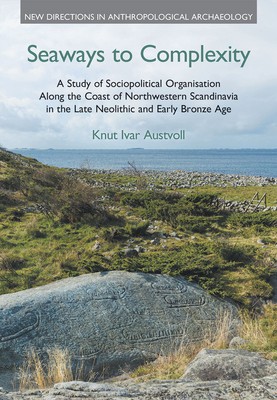
- We will send in 10–14 business days.
- Author: Knut Ivar Austvoll
- Publisher: Equinox Publishing (UK)
- ISBN-10: 1781798788
- ISBN-13: 9781781798782
- Format: 17.8 x 25.4 x 2.2 cm, hardcover
- Language: English
- SAVE -10% with code: EXTRA
Reviews
Description
This book presents the first big synthesis of sociopolitical development in northwestern Scandinavia, and outlines a theoretical model for concurrent but contrasting sociopolitical strategies that can be applied cross-culturally. It focuses on the sociopolitical development and the organisational differences between societies in northwestern Scandinavia in the Late Neolithic and Early Bronze Age (2350-1100 BCE).
Grounded in a political economy approach, the analysis is based on a theoretical model that emphasises a dialectic negotiation between societies exercising coercive or cooperative strategies through processes of categorisation. Within this theoretical model the archaeological material is studied using a two-tiered approach. First, an extensive archaeological corpus, consisting of settlement and burial patterns, lithics, metal and rock art is investigated comparatively for patterns of diachronic, regional and societal differences. Second, patterns from the first tier are scrutinised and three case studies are selected, each expressing different organisational patterns based on local ecological advantages and/or restrictions. These aspects are then discussed on an interregional level, suggesting that utilisation of the seaway was one of the primary movers of increased complexity along the coast.
The intended readership for this book is scholars and students within the field of prehistoric archaeology, and the European Bronze Age in particular. However, the book's comparative basis and emphasis on theoretical development within anthropological archaeology also make it accessible to a broader scholarly field.
EXTRA 10 % discount with code: EXTRA
The promotion ends in 20d.23:49:52
The discount code is valid when purchasing from 10 €. Discounts do not stack.
- Author: Knut Ivar Austvoll
- Publisher: Equinox Publishing (UK)
- ISBN-10: 1781798788
- ISBN-13: 9781781798782
- Format: 17.8 x 25.4 x 2.2 cm, hardcover
- Language: English English
This book presents the first big synthesis of sociopolitical development in northwestern Scandinavia, and outlines a theoretical model for concurrent but contrasting sociopolitical strategies that can be applied cross-culturally. It focuses on the sociopolitical development and the organisational differences between societies in northwestern Scandinavia in the Late Neolithic and Early Bronze Age (2350-1100 BCE).
Grounded in a political economy approach, the analysis is based on a theoretical model that emphasises a dialectic negotiation between societies exercising coercive or cooperative strategies through processes of categorisation. Within this theoretical model the archaeological material is studied using a two-tiered approach. First, an extensive archaeological corpus, consisting of settlement and burial patterns, lithics, metal and rock art is investigated comparatively for patterns of diachronic, regional and societal differences. Second, patterns from the first tier are scrutinised and three case studies are selected, each expressing different organisational patterns based on local ecological advantages and/or restrictions. These aspects are then discussed on an interregional level, suggesting that utilisation of the seaway was one of the primary movers of increased complexity along the coast.
The intended readership for this book is scholars and students within the field of prehistoric archaeology, and the European Bronze Age in particular. However, the book's comparative basis and emphasis on theoretical development within anthropological archaeology also make it accessible to a broader scholarly field.


Reviews